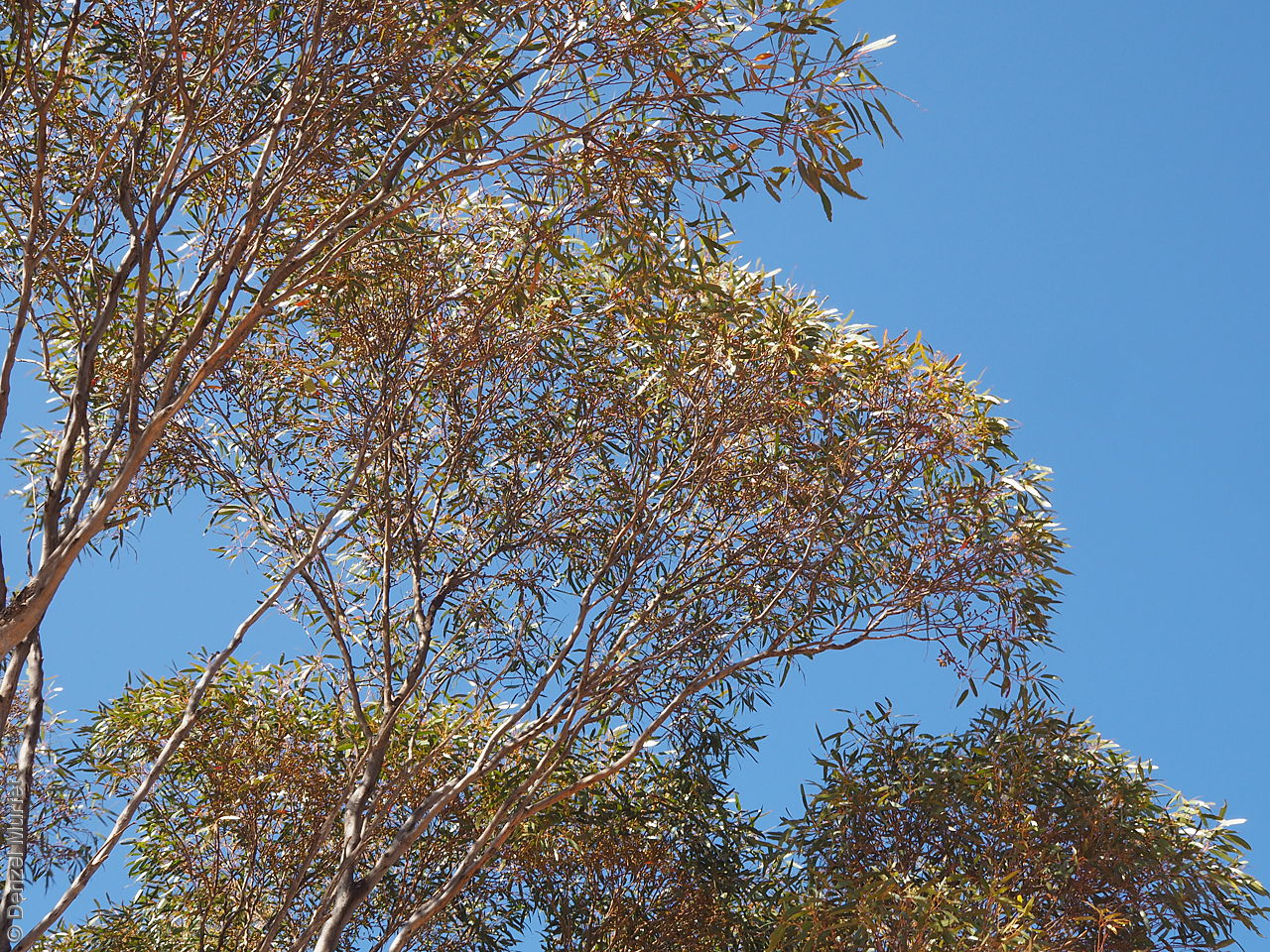
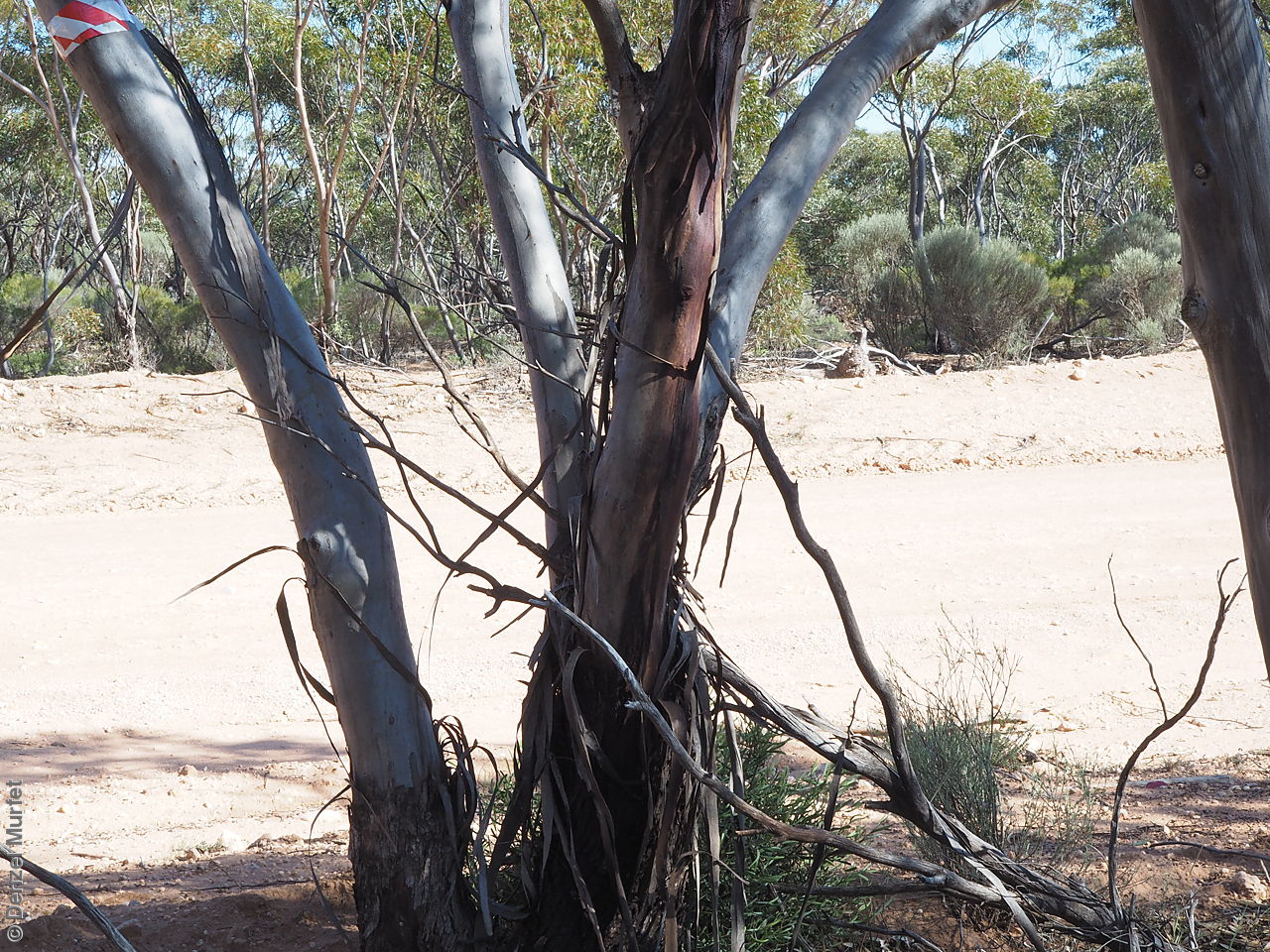
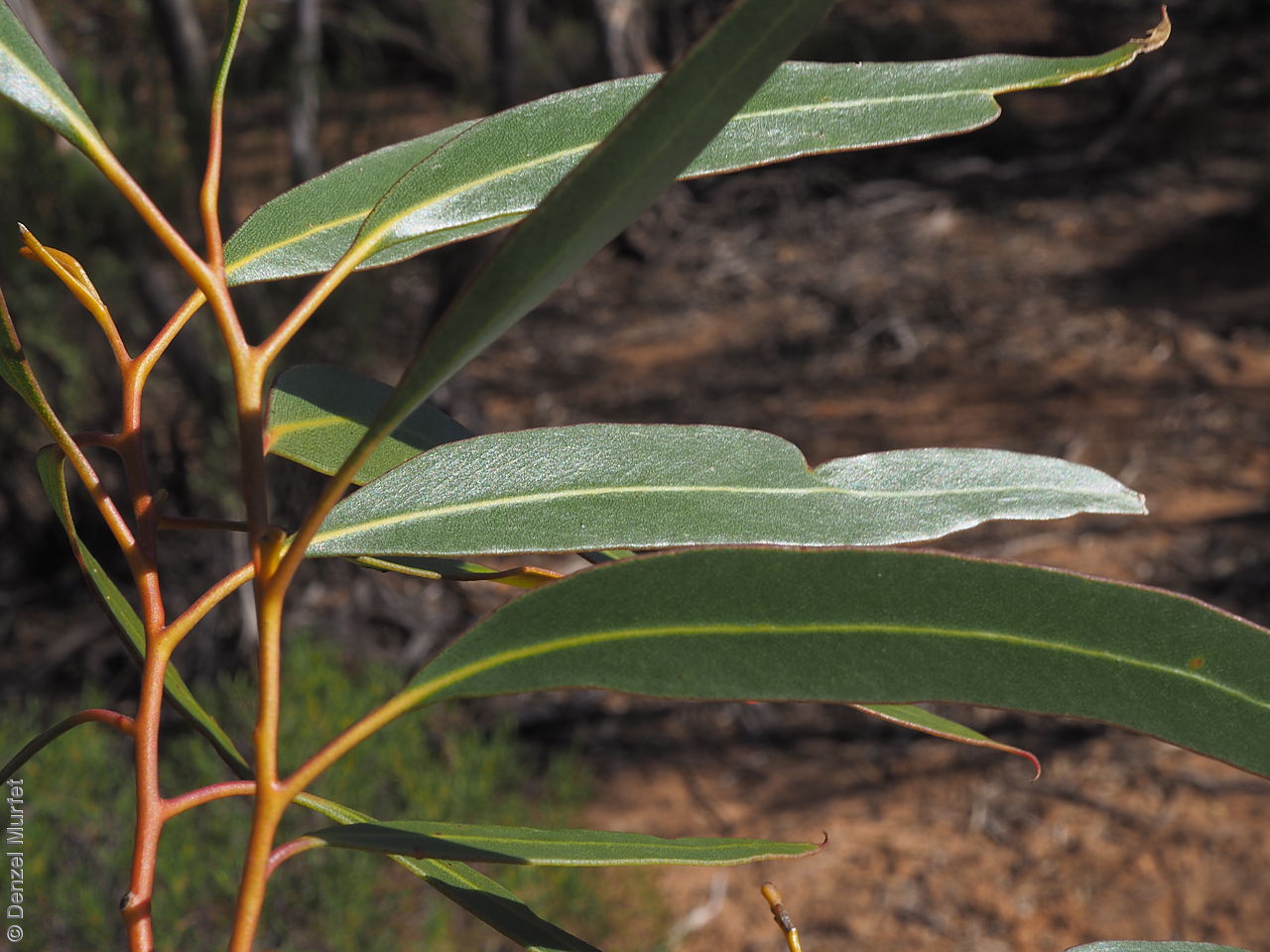

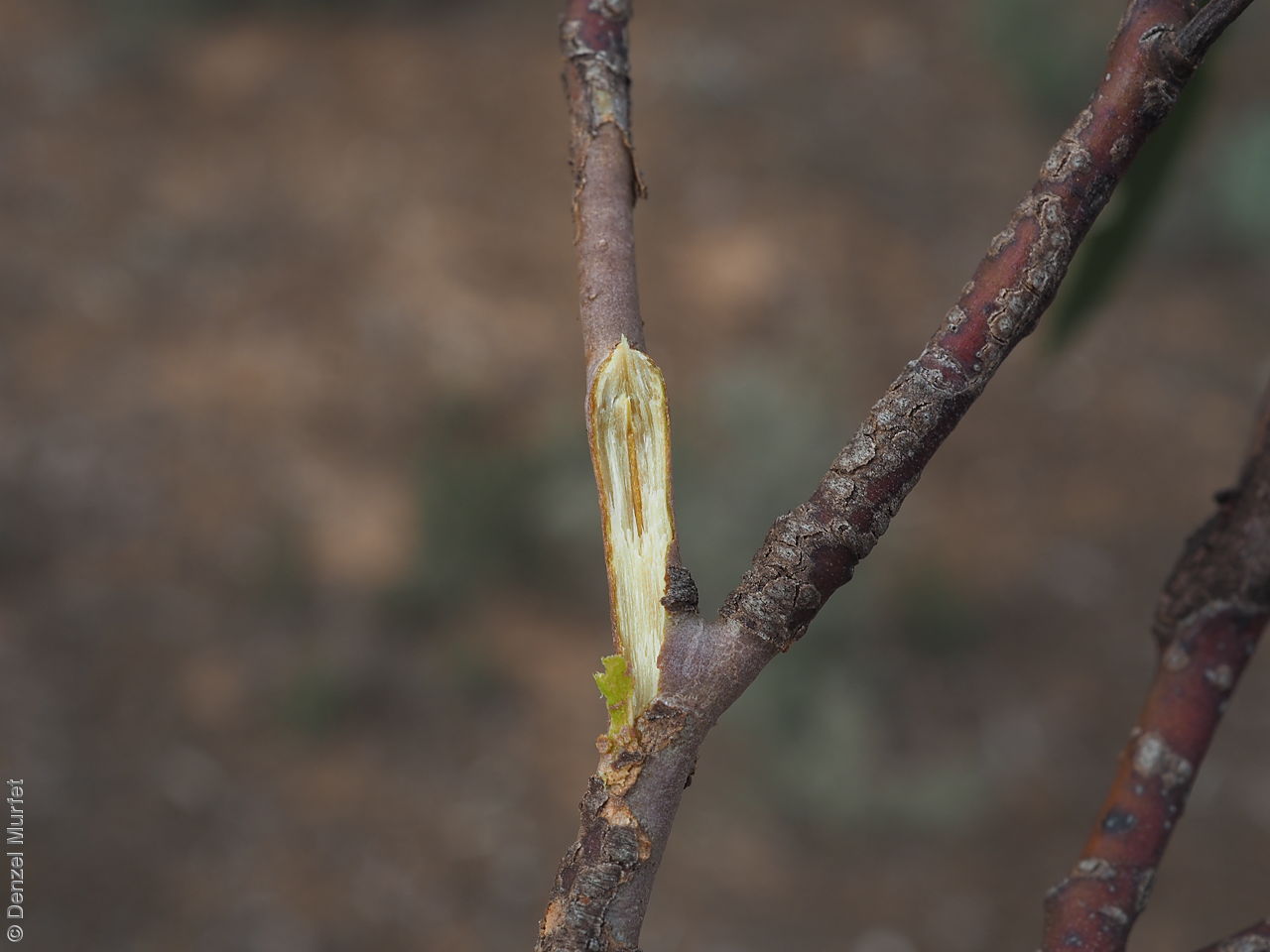
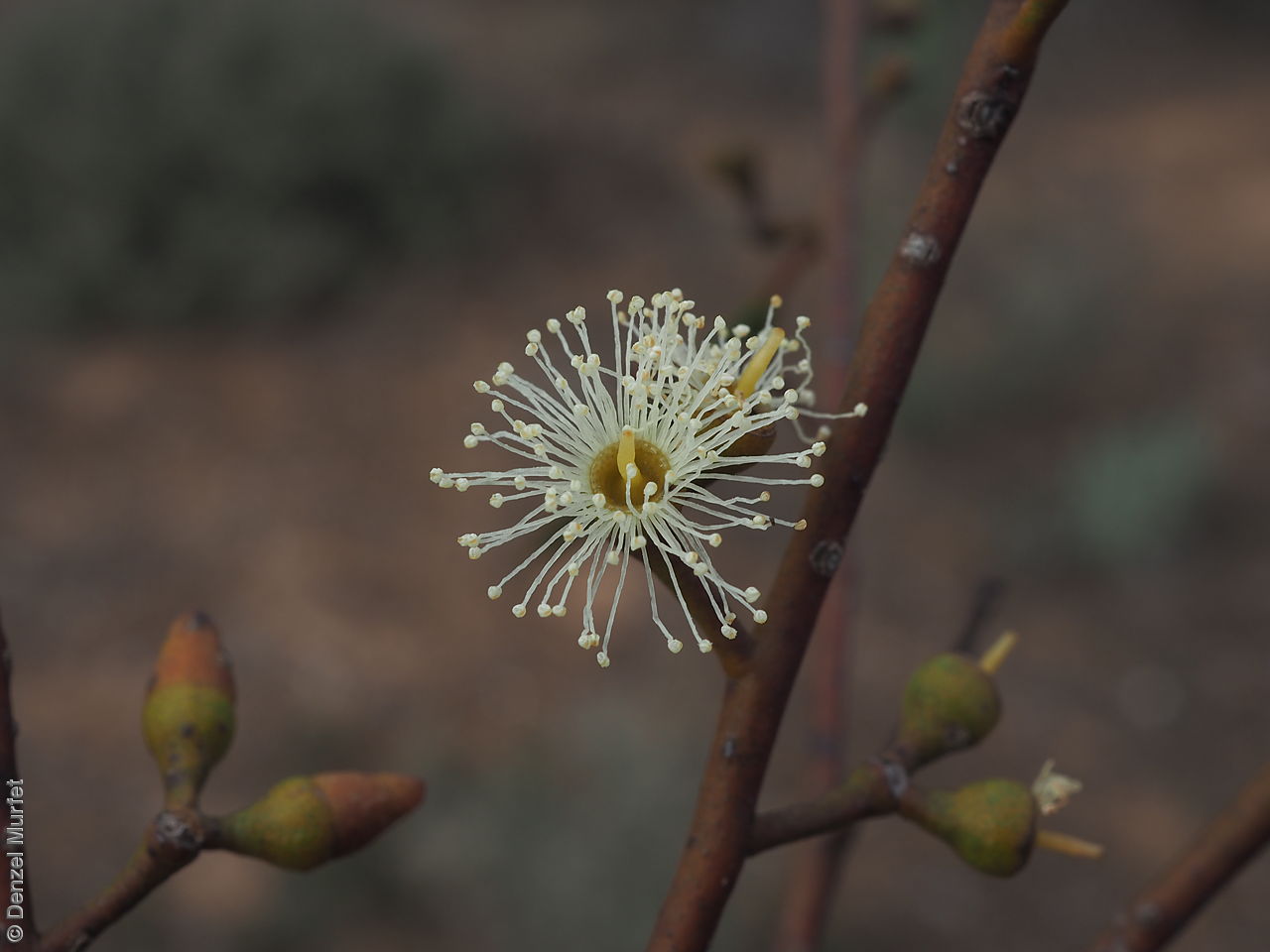
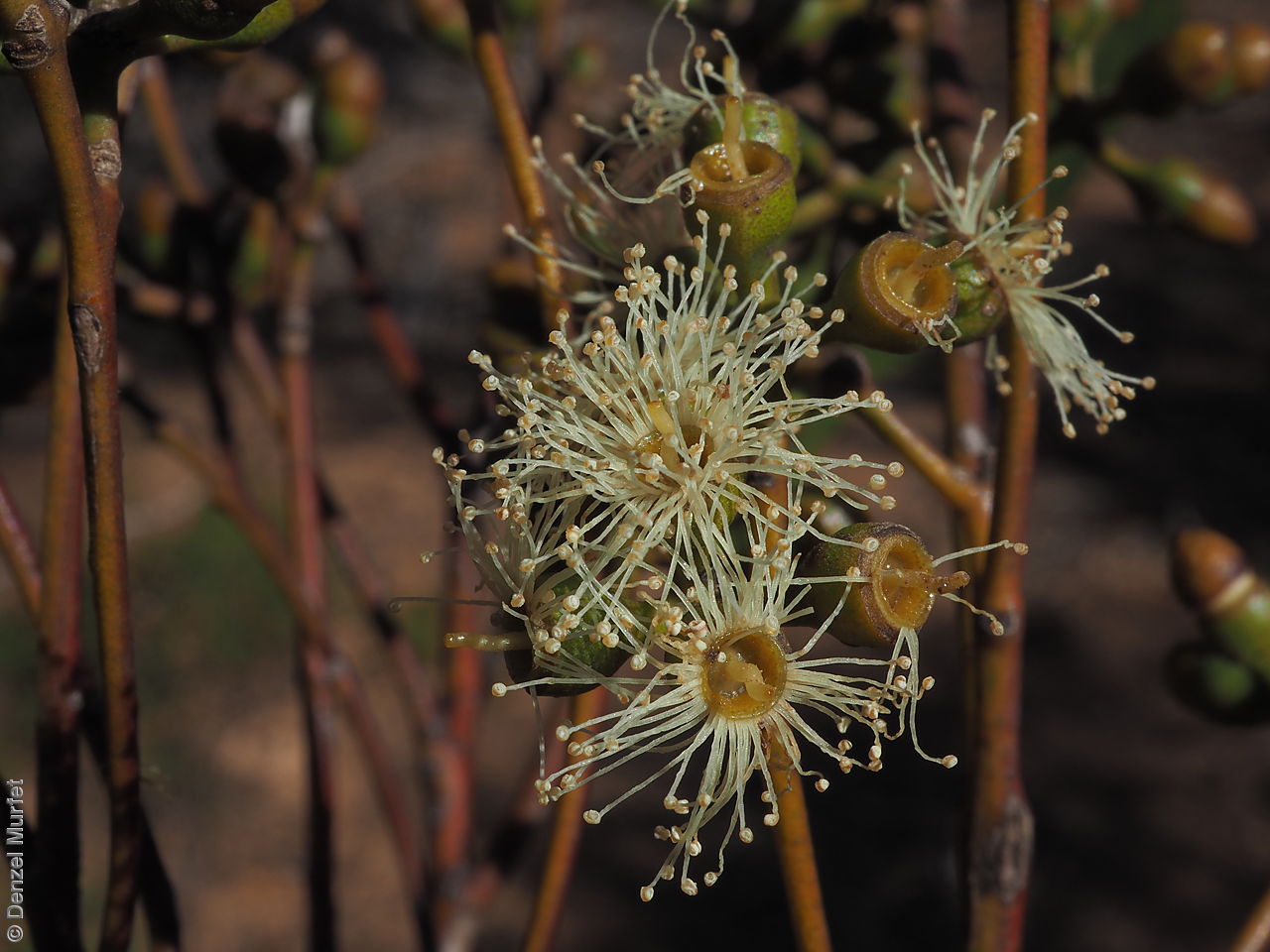
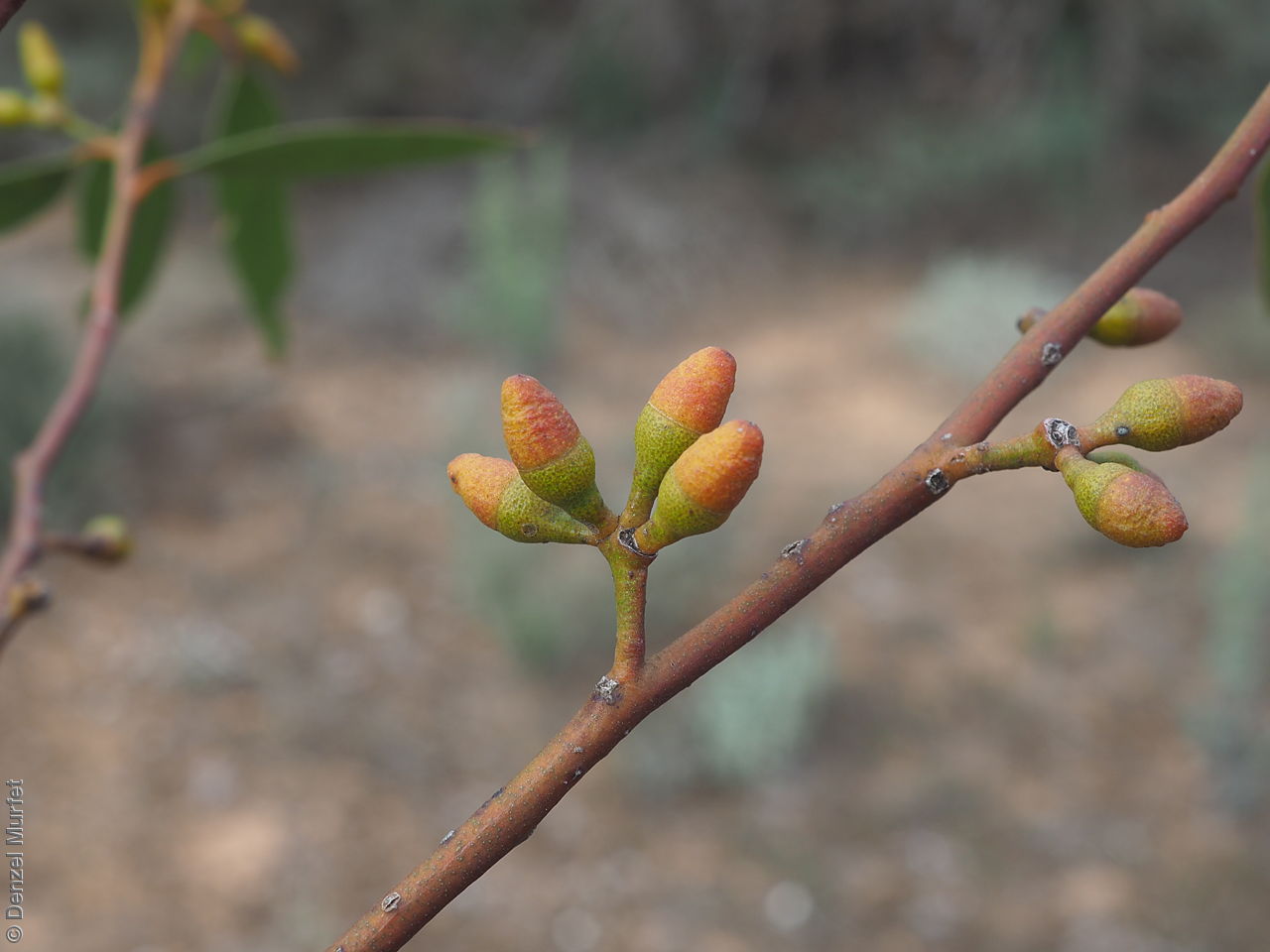
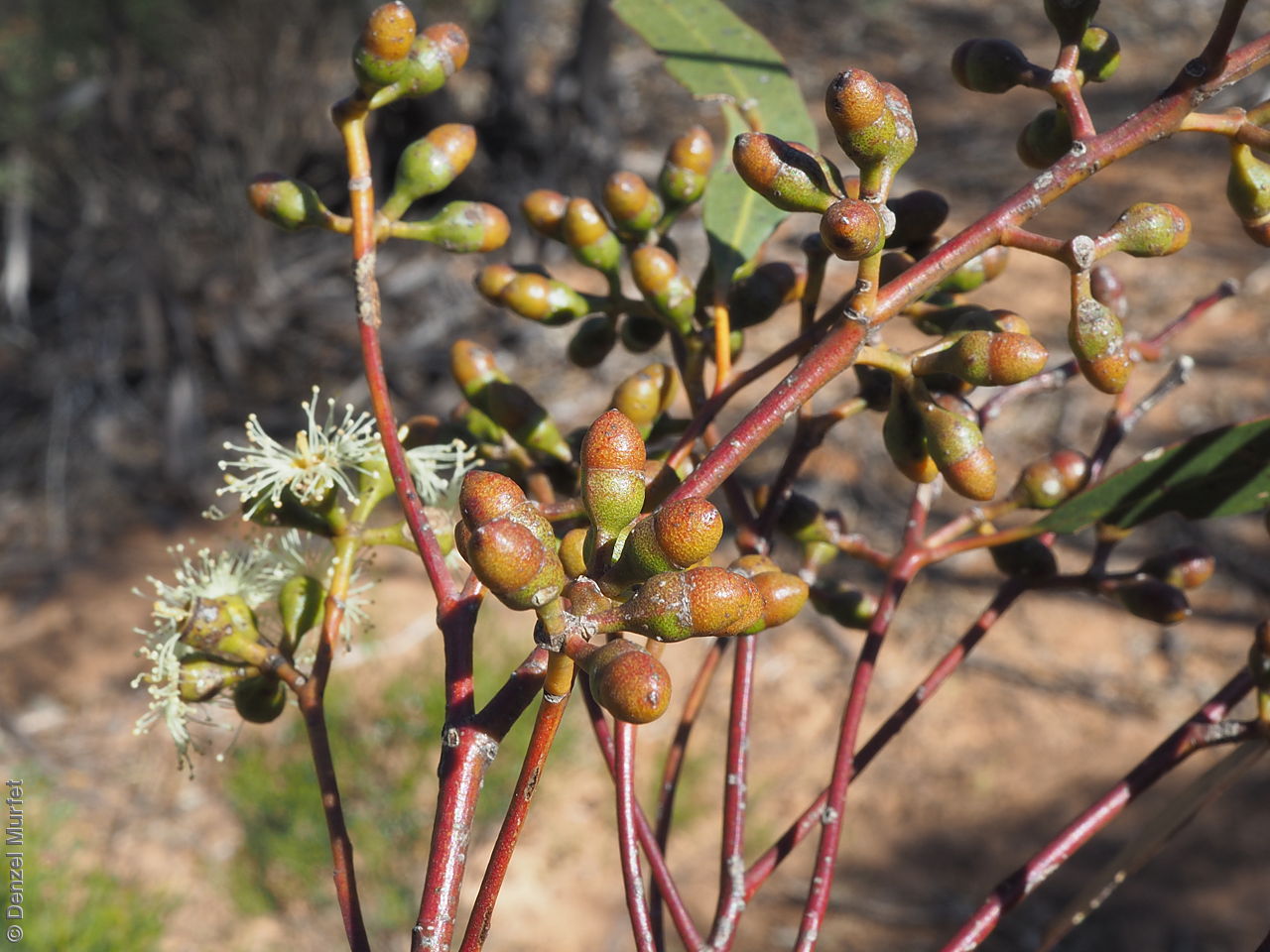
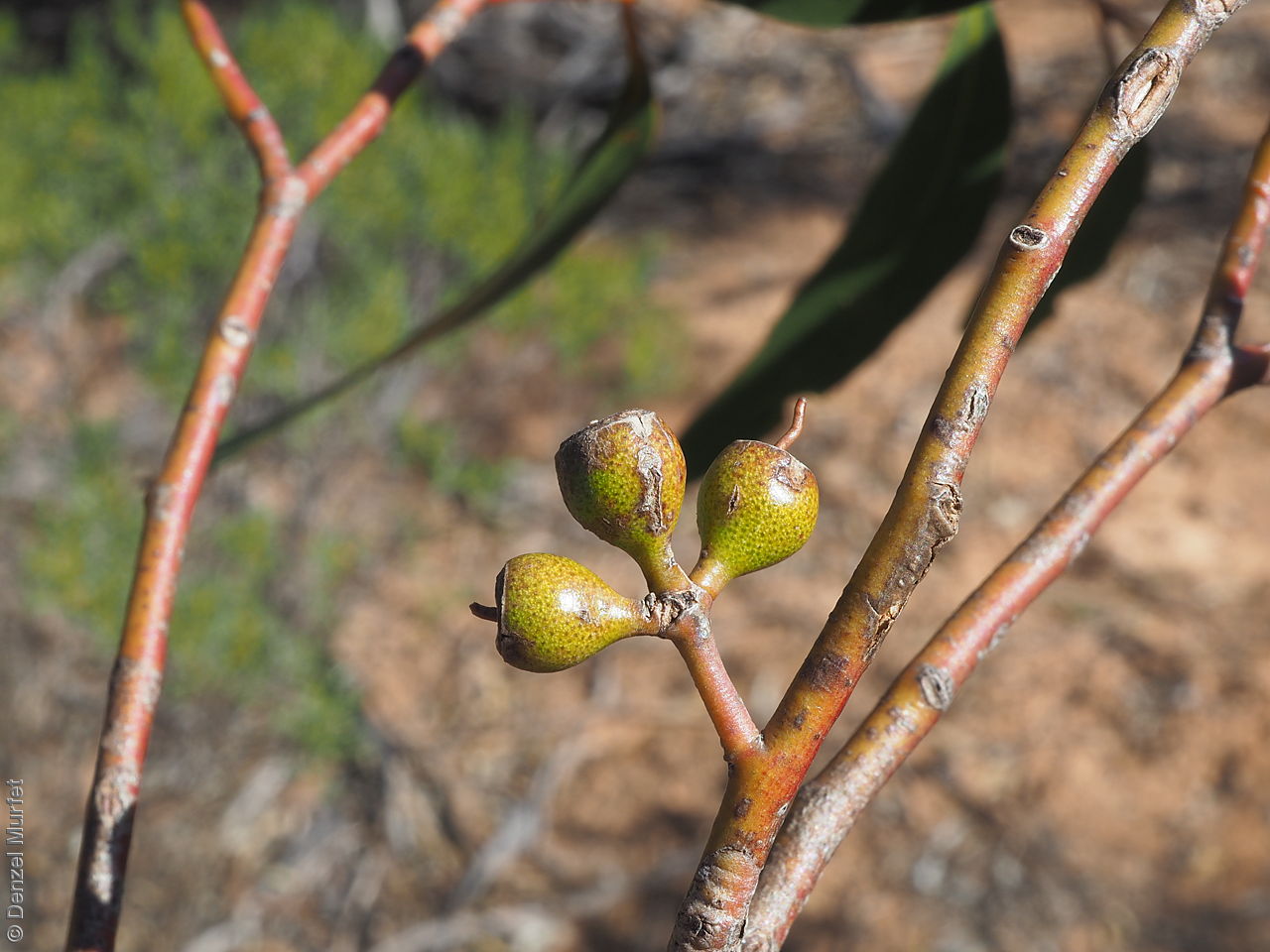
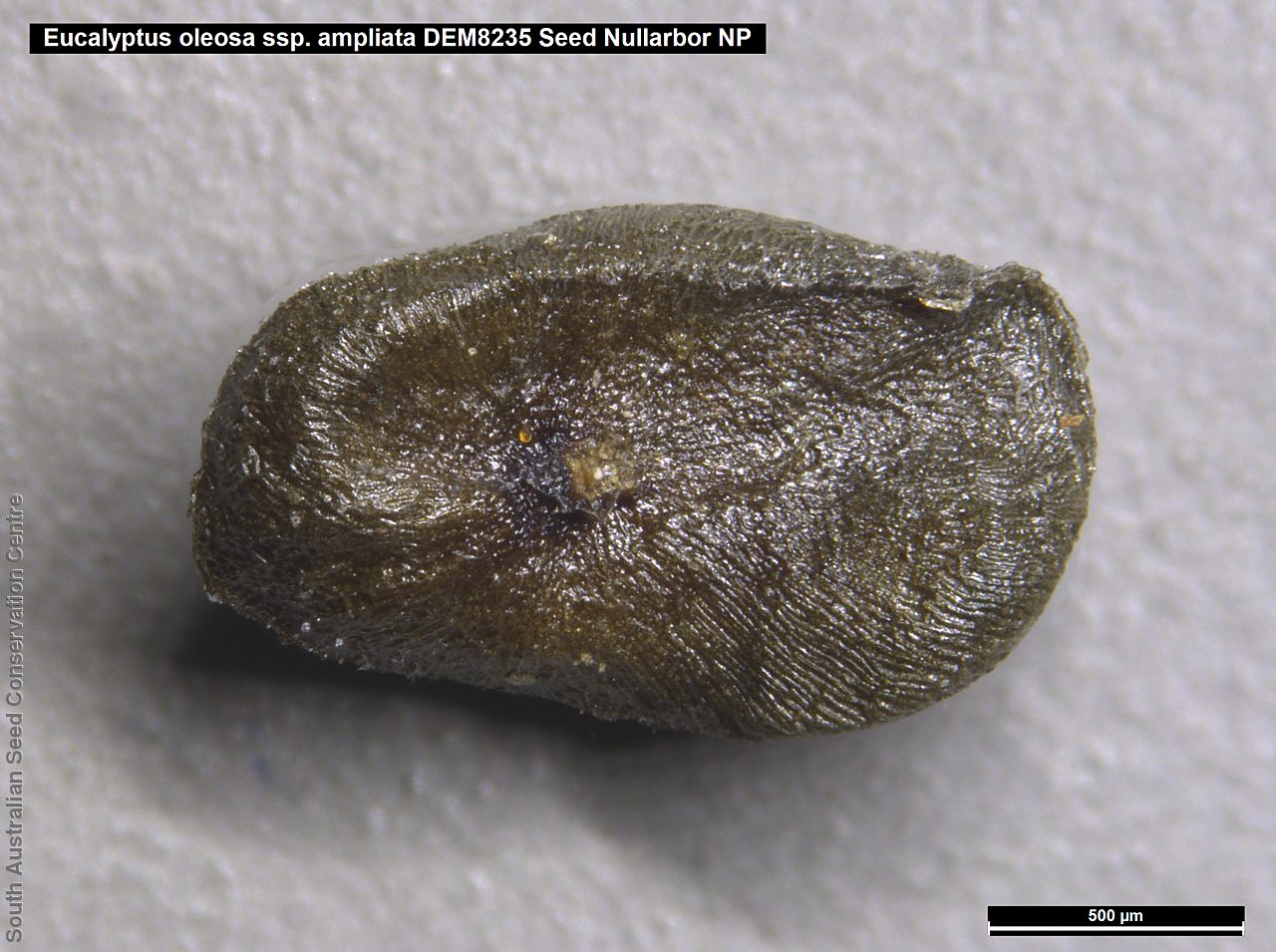
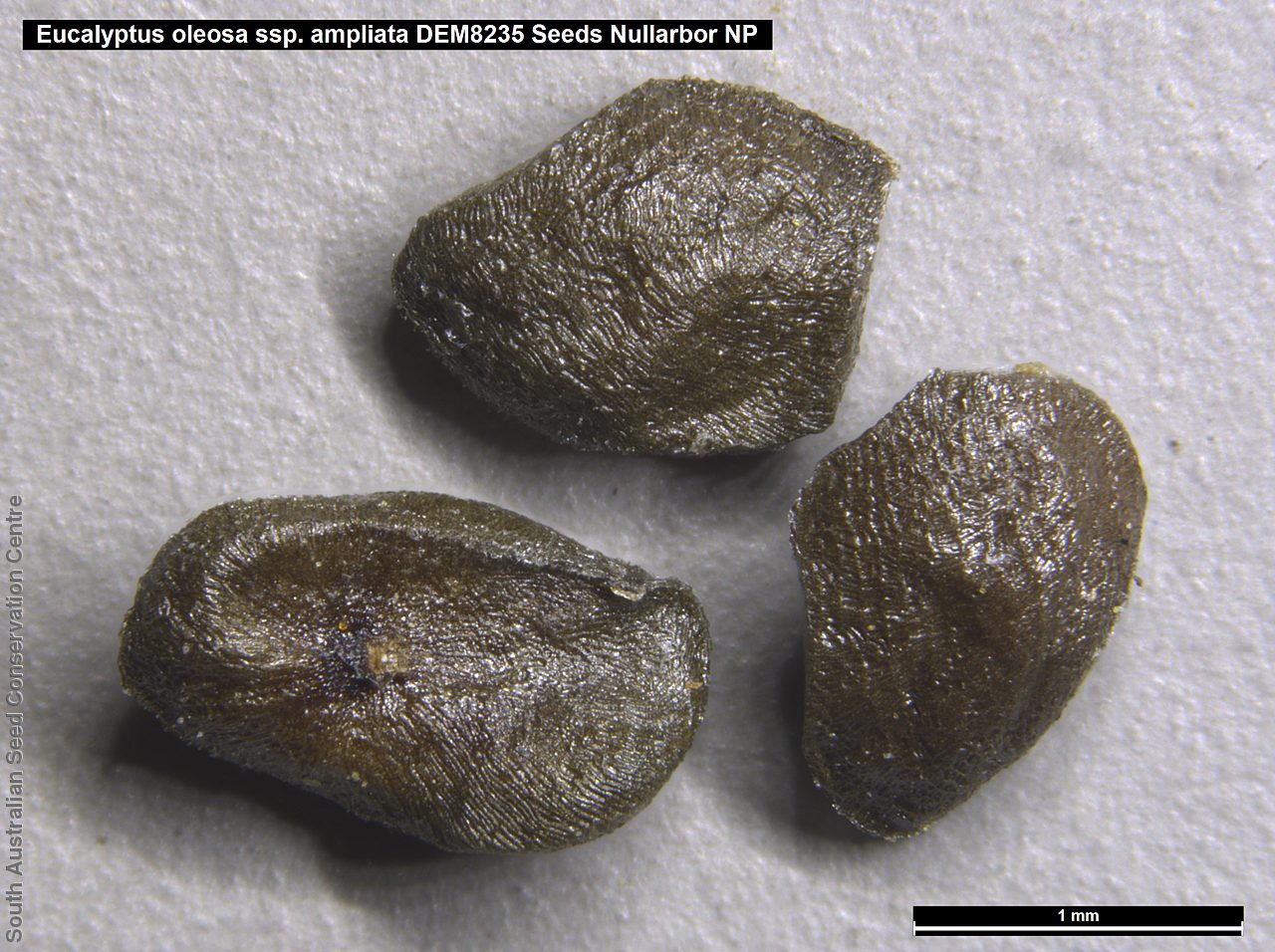

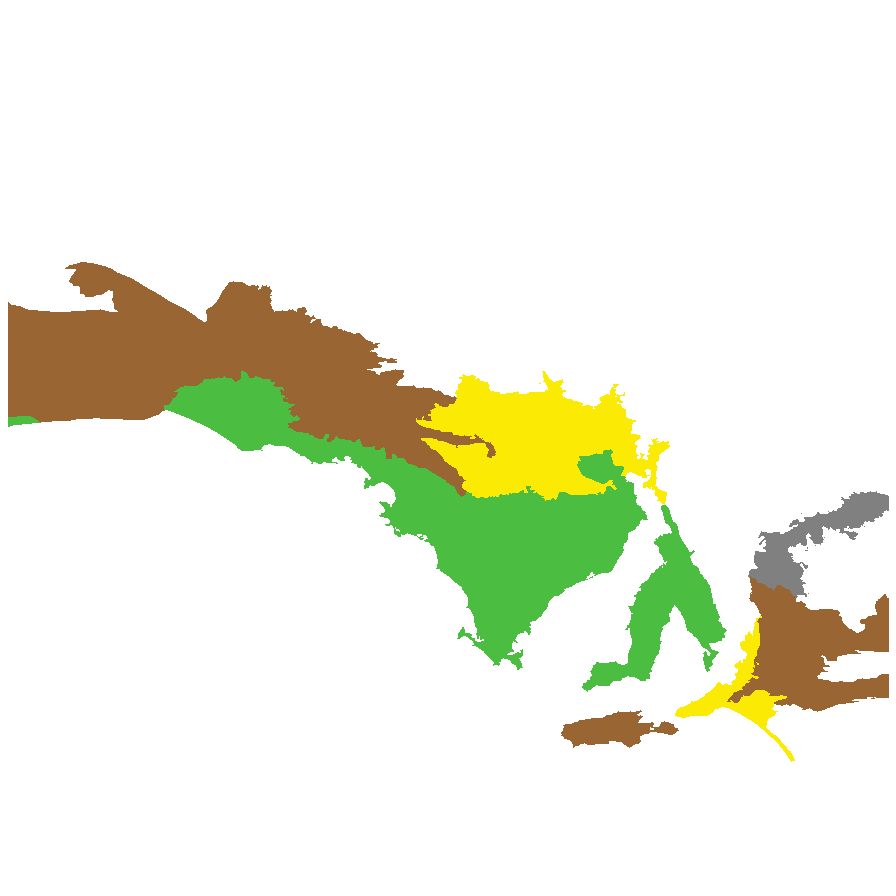
Prior names
Eucalyptus sp. N, questionably
Eucalyptus oleosa, partly
Eucalyptus oleosa ssp. "Coastal"
Eucalyptus oleosa ssp. victima
Eucalyptus oleosa ssp. wylieana
Common names
Acorn Mallee
Red Mallee
Etymology
Eucalyptus from the Greek 'eu' meaning well and 'calyptos' meaning covered; alluding to the cap or lid which covers the stamens in the bud. Oleosa from Latin meaning full of oil; referring to the adult leaves containing plenty of essential oils. Ampliata from the Latin 'ampliatus' meaning increased; alluding to the often larger leaves, buds and fruits of this subpsecies compared to E. oleosa subsp. oleosa.
Distribution and status
Found in the southern part of South Australia, from the Nullarbor to the Fleurieu Peninsula, growing in mallee vegetation on shallow, calcareous, red, brown or pale grey loams overlying limestone. Also found in Western Australia. Native. Common in South Australia. Common in Western Australia.
Herbarium regions: Nullarbor, Flinders Ranges, Eyre Peninsula, Northern Lofty, Murray, Yorke Peninsula, Southern Lofty, Kangaroo Island
NRM regions: Adelaide and Mount Lofty Ranges, Alinytjara Wilurara, Eyre Peninsula, Kangaroo Island, Northern and Yorke, South Australian Arid Lands, South Australian Murray-Darling Basin
AVH map: SA distribution map (external link)
Plant description
Multi-stemmed mallee to 10 m tall with rough, flaky fibrous, grey to brown bark on the lower stems and smooth above. Seedling leaves small, spirally-arranged, ellipse-shaped. Juvenile leaves spirally arranged around a five-sided stems, elliptical, dull, green to blue-green. Adult leaves to 120 mm long and 23 mm wide, lanceolate to broad-lanceolate, glossy, green. Flowers axillary in groups of 7-11. Buds to 10.5 mm long and 5 mm wide, smooth, bud-cap cone-shaped, narrower to slightly wider than the base. Flowers white appearing in summer and autumn. This subspecies can only be dinstinguished reliably from E. oleosa ssp. oleosa by their seedlings. where seedlings are not available, subspecies can be identified base on their distribution. This subspecies generally occurs in more coastal regions compared to E. oleosa ssp. oleosa which occurs more inland. Fruits are barrel-shaped to round-shaped fruit to 7 mm long and 7 mm wide, disc descending, valves 3 or 4 below the rim. Seed embryo type is folded.
Seed collection and propagation
Collect seeds between January and December. Collect mature fruits that are dark and hard (difficult to break with a finger nail), with the valves un-open any time of year. Leave the fruits in a breathable container in a dry room for one to two weeks. This allows the valves on the fruit to open and release the seeds. Separate the seeds by placing all the materials into a bucket and shaking it to dislodge the seeds. Pass the material through a sieve to separate the unwanted material. The finer material will contain both seeds (soft) and frass (hard) usually distinguishable from each other but can be very similar in shape and colour. With finer sieves, the seeds can be separated from the frass but this is not essential for storage or propagation. Store the seeds with a desiccant such as dried silica beads or dry rice, in an air tight container in a cool and dry place. Seeds are non-dormant, viable seed should germinate readily.
| Location | No. of seeds (weight grams) | Number of plants | Date collected | Collection number Collection location | Date stored | % Viability | Storage temperature |
|---|---|---|---|---|---|---|---|
| BGA | 16,300 (8.01 g) | 26 | 27-Aug-2014 | DJD3006 Eyre Peninsula | 1-Jan-2016 | 100% | -18°C |
Number of plants: This is the number of plants from which the seeds were collected.
Collection location: The Herbarium of South Australia's region name.
% Viability: Percentage of filled healthy seeds determined by a cut test or x-ray.